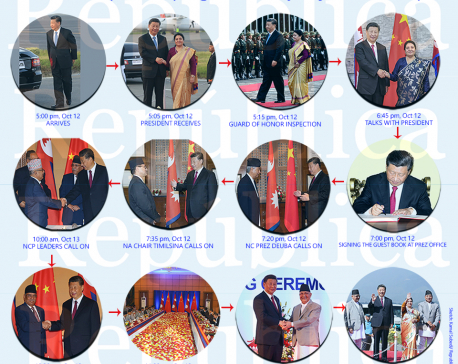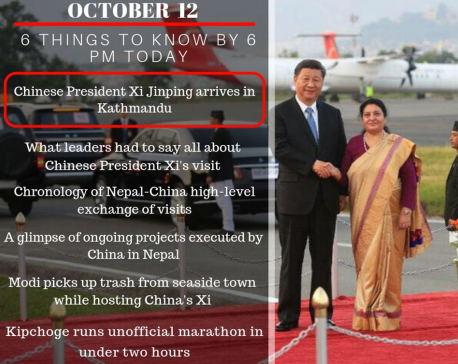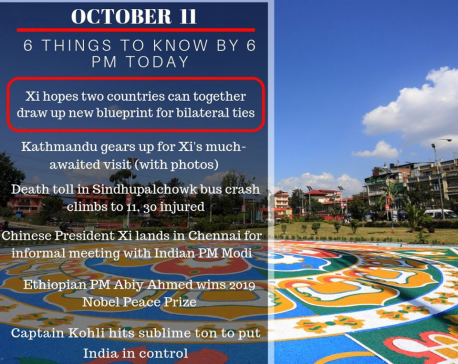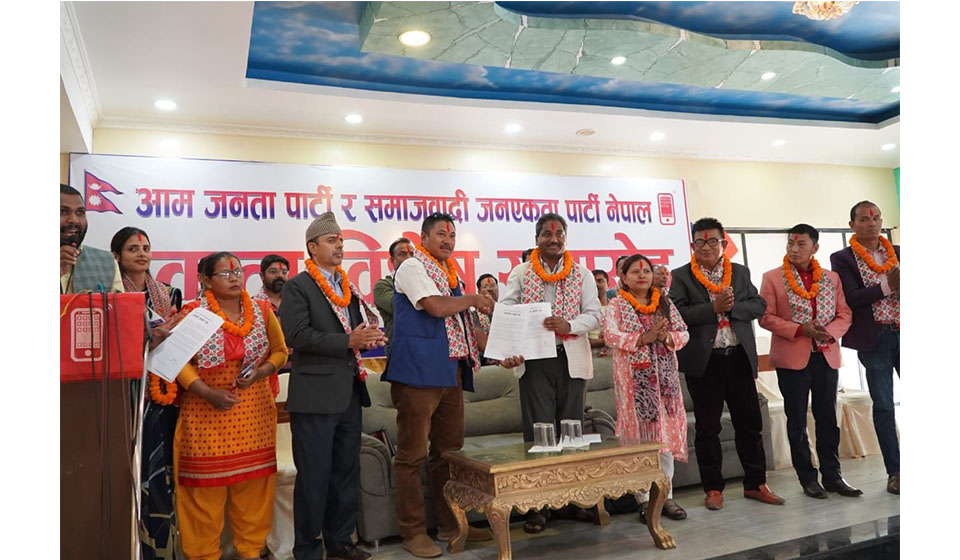
OR
Wrapping up his two-day state visit to Nepal, Chinese President Xi Jinping returned home on Sunday. As we have argued in this space, the visit is significant in many ways. For one, it broke 23 years’ hiatus of presidential level visit from China to Nepal. And it was equally rich in symbolism. China has sent a message that Nepal is an important country and that the bilateral relations between the two countries can be taken to new heights. Now that the visit has been concluded and the details of the deals reached between the two countries have emerged, the success of the story will be evaluated in terms of how Nepal and China will be able to build on those agreements and realize commitments expressed therein. There have been 18 agreements and two letters of exchanges between the government of Nepal and government of China and some of them could be of great substance for Nepal. Memorandum of Understanding (MoU) has been signed on promoting key projects of investment and cooperation on productive capacity between the National Planning Commission of Nepal and the National Development and Reform Commission of China. Plan is to set up an office of Consulate General of Nepal in Chengdu of Sichuan province. MoU has been signed regarding feasibility study of China-Nepal Cross-Border Railway Project. This will pave the way for connecting Nepal with China through railway, which, if utilized well, could prove to be a game changer for Nepal’s economy and infrastructure development. China has offered to assist in construction of 30 kilometers of tunnel along Kerung-Kathmandu road. This will shorten the distance between Kathmandu and Kerung and will make trade with China fast and easy. The joint statement, among other things, mentions that two sides will work to enhance connectivity, encompassing vital components like ports, roads, railways, aviation and communications within the overarching framework of trans-Himalayan Multi-Dimensional Connectivity Network with a view to contributing to Nepal’s development agenda. There is a commitment to strengthening cooperation in fields of economy including trade, tourism and investment.
During the visit, President Xi announced to provide financial assistance of around Rs 56 billion to Nepal between 2020 and 2022. This is a substantial amount of money. How far these agreements and financial assistance will translate into reality will largely depend on how Nepal (and also China) will work to advance them to next levels. But some of the statements made by President Xi during the meeting with his Nepali counterpart are loaded with symbolism and Chinese goodwill. Addressing the state banquet hosted by his Nepali counterpart Bidya Devi Bhandari in Kathmandu on Saturday evening, President Xi announced: “We will develop Trans-Himalayan Multi-Dimensional Connectivity Network and help Nepal to realize its dream to transform itself from landlocked country to land-linked country.” This is a big statement and has resonated well among Nepalis. His assurance to contribute to making ‘Visit Nepal 2020’ campaign a grand success is equally meaningful.
Nepali political parties demonstrated unity in welcoming the Chinese leader. High level visit like this and agreements do not automatically translate into substantive outcomes overnight. It takes months, even years, for some of the projects announced during the visits to take off. The most important relevance of such visits lies in enhancing the goodwill between the two countries. Now the onus will be upon the government to follow through agreements and turn them into substantive gains. Often, Nepali side has failed to do proper homework on realizing the agreements signed during such visits—whether be that from India, China or other countries—into action. Let us hope, it will be different this time.
You May Like This

Roundup: Xi Jinping’s two-day sojourn to Nepal (with photos/ infographics)
KATHMANDU, Oct 13: Chinese President Xi Jinping paid a two-day state visit to Nepal on an invitation of his Nepali... Read More...

Oct 12: 6 things to know by 6 PM today
Your daily dose of missed important news of the day. ... Read More...

Oct 11: 6 things to know by 6 PM today
Your daily dose of missed important news of the day. ... Read More...



Just In
- Sunkoshi-Marin Diversion Project’s tunnel construction nears completion, breakthrough scheduled for May 8
- Govt tightens security arrangement for Third Investment Summit 2024
- Pesticide residue found in vegetables in Nepalgunj
- Aam Janata Party and Samajwadi Jana Ekata Party merge
- 1,600 participants confirmed for Nepal Investment Summit
- Ilam-2 by-elections held peacefully, vote count likely to start tonight
- NEA schedules five-day power cut across Kathmandu Valley for underground cable installation
- Hundreds of passengers including foreign tourists in distress as poor visibility halts flights to and from PRIA







-1200x560-wm_20240427144118.jpg)






Leave A Comment